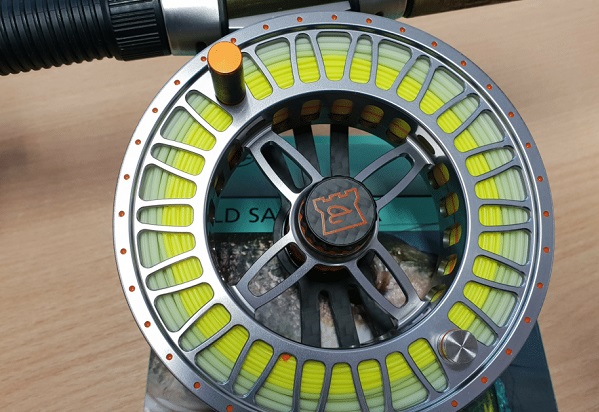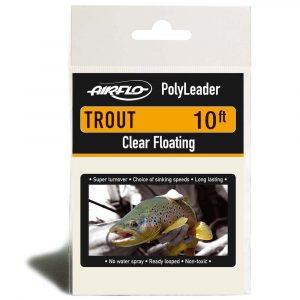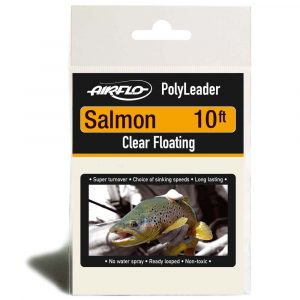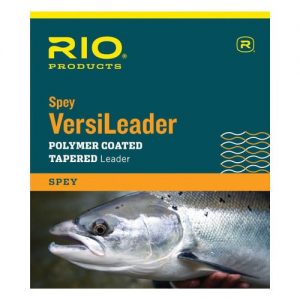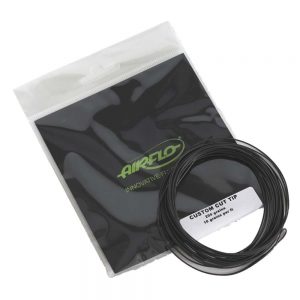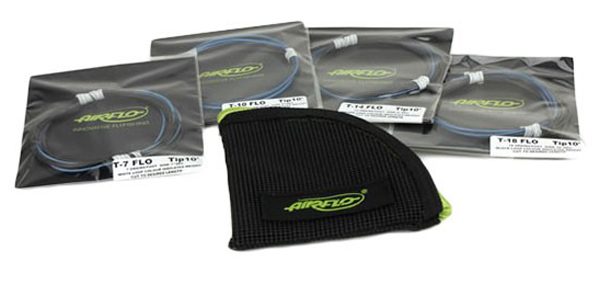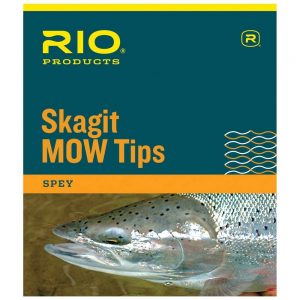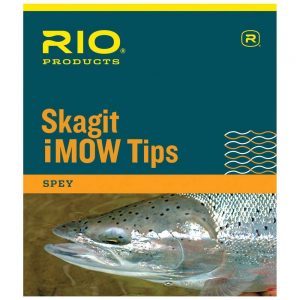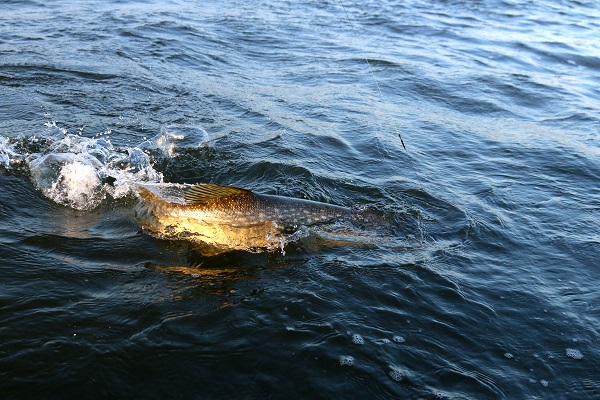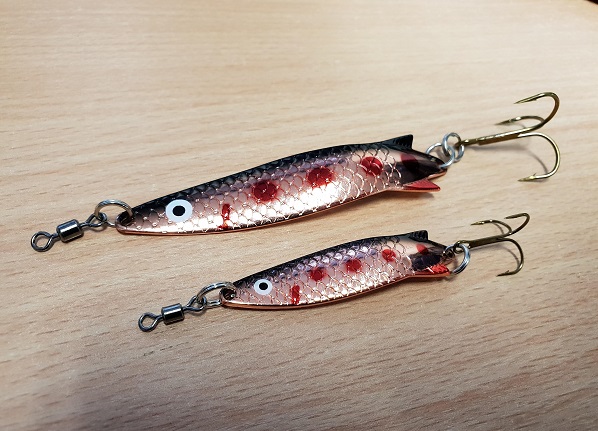We like to simplify things here at Angling Active in our explanations and how to’s. The confusing and ever-growing world of sink tips though is a daunting prospect at first glance, and we can understand why you have ended up on this blog post. This post should help because we have broken it all down into fly line types and explained every tip we sell.

THE BASICS
For those of you that need clearing up on what a sink tip is, simply, it is a short length of fly line (5-14ft) that you attach to the forward end of your main fly line which sinks. It helps the fly just break the surface or sink like a stone depending on the speed (sink rate) of the tip you use. Tips are usually attached to the line by a loop to loop connection by threading one through the other, thus making them quick to change whilst fishing. A length of tippet is then tied to the front via a figure 8 knot. The one thing that can trip a beginner up is that not all sink tips are designed to sink, some float, but more on this later. Sink tips are not required by most fly lines, but it is preferred to use a tip most of the time in many fly fishing applications including trout, salmon, seatrout and pike fishing to get your fly into position i.e.placement, depth of the fly and your presentation.
THE COMPLEXITIES
It’s not too difficult to choose the correct tip for the job when you are on the river because you are limited to what you have in your tackle bag/vest. When you are in the tackle store, however, or online, there are so many tips on the market that boast different things and this is where the knowledge of the staff comes in.
Qualities and terminology like tapered/straight, length, floating/sinking, sink rates, intermediates, slow/fast, dual densities, tungsten, T-7 to T-20, ‘continued profiles’, welded loops, loop to loop, looped at one end, looped at both ends, colour coded, custom cut, mono core, braided core, polyleader, versitip, versi leader, Mow, iMow, Commando, the list goes on…
When faced with the selections we have in store, all of a sudden all of these qualities listed above seem important to you the angler. The worst of it all is that these tips can range vastly in price from £3.99 through to £20. Why? The rest of this post will hopefully answer this for you explaining the diversity of tips.
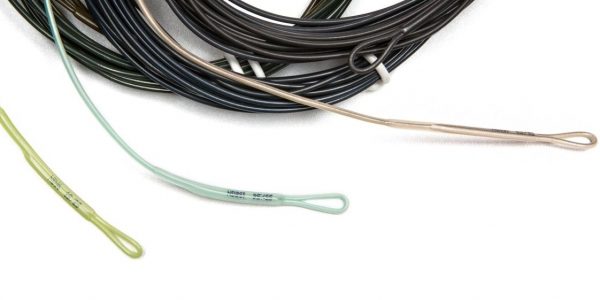
IDENTIFICATION
After you’ve selected what you want and purchased the perfect range for your fishing needs, a year goes by and you can’t remember which ones do what because the colours are all similar. So you chance your luck, figure them out by testing them in a bucket or bath, or you just buy more because there just isn’t enough time in the day. The amount of times we are presented with a customer’s tangled up old tip and asked “do you know what sink rate this tip is?” is getting silly. The industry, however, is slowly catching up on this problem and beginning to colour code and better still ID stamp the tips. At last! We have given as much detail as we can in the tables below to help you identify your old tips.
TROUT LINES
Let’s start with standard WF trout lines and the tips recommended by ourselves. This is the easiest of disciplines to shop for within our sink tip range, simply because we stock one type to cover most trout scenarios on stillwater and rivers. These recommendations are perfect for those of you who are using trout gear for saltwater fly mullet and bass. The Trout Airflo Polyleaders are just the job. They come in 5ft and 10ft lengths in individual packs and tell you exactly what they do on the packaging:
| Trout 5ft | Trout 10ft | Sink Rate inches/sec | Works with Tippet | Loops included? | Core | Colour |
| Clear Floating | Clear Floating | Floats | Up to 12lb | At reel end | Mono | Clear |
| Clear Hover | Clear Hover | 0.5 | Up to 12lb | At reel end | Mono | Clear |
| Clear Intermediate | Clear Interim. | 1.5 | Up to 12lb | At reel end | Mono | Clear |
| Slow Sink | Slow Sink | 2.6 | Up to 12lb | At reel end | Mono | Grey |
| Fast Sink | Fast Sink | 3.9 | Up to 12lb | At reel end | Mono | Brown |
| Super Fast Sinking | Super Fast Sinking | 4.9 | Up to 12lb | At reel end | Mono | Dark Grey |
| Extra Super Fast Sinking | Extra Super Fast Sinking | 6.1 | Up to 12lb | At reel end | Mono | Dark Grey |
NB. From the above chart you can find out what each Airflo Polyleader trout tip does, and the qualities each boast. These are excellent tips except for the lack of the ability to identify them once they are out of their packaging. The packaging has an ID chart on the back, but the tips are nothing like what they claim so ignore this. We’ll keep moaning to Airflo to sort this out. We suggest to you however to get a wallet and keep the packaging in the individual segments with the description facing out.
SALMON – Scandi, Spey & Switch Lines
There are two main brands of sink tips that can add depth to your fly on traditional Spey lines and the more recent but far more popular shooting head (aka Scandi) lines and Switch lines. These two tips are called Salmon/Steelhead Polyleaders (by Airflo) as seen above, and the equivalent Versileaders (by RIO, mentioned below). Almost exactly the same products, but they are called different things by the manufacturers.
| Salmon Steelhd 5ft | Salmon Steelhd 10ft | Salmon 14ft | Sink Rate inch/sec | Works with Tippet | Loops included? | Core | Colour |
| Clear Floating | – | – | Floats | Up to 24lb | At reel end | Mono | Clear |
| Clear Int | Clear Int | Clear Int | 1.5 | Up to 24lb | At reel end | Mono | Clear |
| Slow Sink | Slow Sink | Slow Sink | 2.6 | Up to 24lb | At reel end | Mono | Grey |
| Fast Sink | Fast Sink | Fast Sink | 3.9 | Up to 24lb | At reel end | Mono | Brown |
| Super Fast Sinking | Super Fast Sinking | Super Fast Sinking | 4.9 | Up to 24lb | At reel end | Mono | Dark Grey |
| Extra Super Fast Sinking | Extra Super Fast Sinking | Extra Super Fast Sinking | 6.1 | Up to 24lb | At reel end | Mono | Dark Grey |
NB. Again, excellent products from Airflo, reliable and strong. The identification issues we had with the Airflo Trout Polyleaders is repeated here though and again we suggest you keep the packaging to determine which are which after a spell of not using them.
RIO Spey Versileaders
The main difference in RIO’s version of sinking tips (the Versileaders) is the 6ft option rather than the 5ft Airflo version. There are 10ft options too. Not to be confused with RIO’s VersiTips. VersiTips are the last 10-15ft part of RIO Scandi shooting heads. They are tapered and connect to the Scandi Body. You can add any sink tips to VersiTips because they are considered the main fly line.
| 6ft | 10ft | Sink Rate inch/second | Breaking Strain | Loops included? | Core | Colour |
| – | Float | Floats | 24lb | At reel end | Mono | Olive/Olive loop |
| 1.5ips | 1.5ips | 1.5 | 24lb | At reel end | Mono | Clear/Clear loop |
| 3ips | 3ips | 3 | 24lb | At reel end | Mono | Brown/Green Loop |
| 5ips | 5ips | 5 | 24lb | At reel end | Mono | Black/Blue Loop |
| 7ips | 7ips | 7 | 24lb | At reel end | Mono | Black/Black Loop |
NB. At least RIO have colour coded these tips to identify them on the river. However, you will have to remember what the colour combinations mean. It would be great if they ID tagged these, which seems to be what their other products are moving towards. There is a 10ft floating option from RIO that Airflo does not offer – great for fishing the Sunray.

RIO iMOW tips and MOW tips come in 10ft lengths with 4 options in proportions of line to sinking tip.
SKAGIT LINES
Enter the world of Skagit. In another post we explained what skagit is and the purposes skagit lines have in our UK waters. Please see this article here: “Best Skagit Setup for UK Salmon?”
Tips for skagit lines are plentiful. The above trout, scandi, spey and switch lines all work on their own without tips, but as mentioned earlier, the addition of a tip compliments the placement, depth of the fly and your presentation. Skagit however requires a tip to function, the tip is a continuation of the line and without it the line overpowers and folds in the air.
Tips for skagit lines come in various forms. The original is straight tungsten tips aka. T-tips. We stock two brands of these T-Tips again by Airflo and RIO. The two options below are designed for you to “custom cut”, which means you can cut them to any desired lengths. We recommend you use braided loops (with a dab of superglue) on the cut ends instead of knots to connect these to your fly line.
Airflo Custom Cut Tips:
These tips are designed to be fished as they come or you can cut them down into multiple lengths. i.e. cut the 18′ version into a 12′ and a 6′ selection. Quite simply the longer the T tip you put on the end of your skagit line, the further down your fly will sink. Purchasing a longer length and cutting it increases the value of your purchase because the have multiple tips.
| 10ft | 18ft | 20ft | Sink Rate inch/sec | Breaking Strain | Loops included? | Core | Colour |
| T10 | T10 | T10 | 8 | >30lb | At reel end | Braid | Orange loop |
| T14 | T14 | T14 | 9 | >30lb | At reel end | Braid | Brown loop |
| T18 | T18 | T18 | 10 | >30lb | At reel end | Braid | Black Loop |
NB. The above is quite simple and these tips are excellent, the brown and the black loops are similar in colour though and difficult to differentiate in low light. Otherwise a brilliant selection of lengths and weights.
RIO InTouch Level T Tips:
These are again similar to the Airflo option above, this time however there is a wider range of T ratings (sink rates) and all the tips are 30ft long designed for the angler to cut them down to whatever lengths they desire.
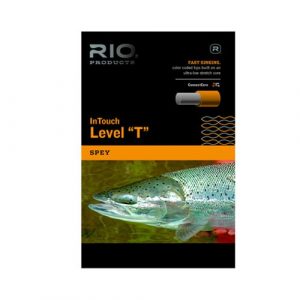
| 30ft | Sink Rate inch/sec | Breaking Strain | Loops included? | Core | Colour |
| T8 | 6-7 | >30lb | At both ends | Braid | Red |
| T11 | 7-8 | >30lb | At both ends | Braid | Green |
| T14 | 8-9 | >30lb | At both ends | Braid | Blue |
| T17 | 9-10 | >30lb | At both ends | Braid | Grey |
| T20 | 10+ | >30lb | At both ends | Braid | Black |
NB. These tips are looped at both ends, this is great considering you will definitely have to cut them into multiple tips as they are 30ft long.
Moving on, there are skagit tips designed for those who do not wish to cut tips and add braided loops. These finished tips are tapered, meaning they narrow towards the front end. This is also known as “continued profile”. This narrowing profile helps the transfer of energy down the line and lands your line straighter. The beauty of finished tips, as discovered in the poly leader/versileader section at the top of this article, is that you can have not only sinking tips, but floating and intermediate options too. Like we mentioned, read “Best Skagit Setup for UK Salmon?” to learn more about the benefits of floating tips on skagit lines.
Following true to form, we have Airflo and Rio versions of these types of skagit tips too. There is also OPST as a brand, but these are better suited to Micro Skagit which we have covered at the foot of this post.
Airflo Skagit Flo Tips:
Four types of tip all with 2.5ft of intermediate line and 7.5ft of tungsten tip in differing sink rates.
| 10ft | Sink Rate inch/second | Breaking Strain | Loops included? | Core | ID Tag |
| T7 | 7 | >30lb | At both ends | Braid | yes |
| T10 | 8 | >30lb | At both ends | Braid | yes |
| T14 | 9 | >30lb | At both ends | Braid | yes |
| T18 | 10 | >30lb | At both ends | Braid | yes |
NB. At last we have ID tags on the above tips, a sign of times ahead. Easy identification, easy loop to loop connections, no knots and a good range of sink rates.
RIO Skagit MOW and iMOW Tips:
These MOW tips are designed by RIO specifically for skagit heads to maximise presentation and give the angler sink rate options. MOW tips are dual density, meaning they have a floating rear section which changes into the tungsten coated section at the front. The MOW tips in the charts below are 10ft long and they are broken down into ‘length of floating section + the length of the sinking section’ i.e. “7.5ft + 2.5ft”. These tips are then further broken down into three recommended skagit line grain weights.
Purchase the Medium, Heavy or Extra heavy depending on your skagit line grain weight:
Medium = 475 to 575grain;
Heavy = 575 grains and up;
Extra Heavy = 675 grains and up.
- MOW
- iMOW (intermediate)
| 10ft float | 7.5ft + 2.5ft | 5ft + 5ft | 2.5ft + 7.5ft | Float to Sink Rate | iMow | Match to (grains) | Loops | Core | ID Tag |
| Med | Med | Med | Med | T-11 (8″) | yes | 475-575 | Both Ends | Braid | Yes |
| Heavy | Heavy | Heavy | Heavy | T-14 (9″) | yes | >575 | Both Ends | Braid | Yes |
| Extra Heavy | Extra Heavy | Extra Heavy | Extra Heavy | T-17 (10″) | no | >675 | Both Ends | Braid | Yes |
NB.iMow is quite simply the “Intermediate” alternative to the floating MOW tips. They are identical tips but with an intermediate line instead of floating.
MICRO SKAGIT
This is the newest little piggy section of tips that has “come to market”. Micro Skagit is covered in our article: Micro Skagit in the UK?
Now these tips are much the same as what you will have seen in the Skagit graphs above, however micro skagit is designed predominantly as an alternative (not replacement) for nearly every one of the line types mentioned in this article. Trout lines, switch lines, spey and scandi, all of the rods you use for these lines have a micro skagit line to suit, up to #8 in double handers or #12 in single handers. Again, we recommend you read this article to really get to grips with the concept and understand what Riffle, Bucket and Run tips are too.
OPST Skagit Commando Floating and Sinking Tips:
From the chart below, choose either the rod you are using in weight and length, or the head grain weight and then choose a tip from there.
- Floating
- Sinking: Riffle, Run, & Bucket
| Rod Weight | Rod Length | Commando Head | Sink Tips 5′ | Sink Tips 12′ | Float Tips 5′ | Float Tips 7.5′ | Float Tips 10′ |
| #3 | up to 9′ | 150 grain | Yes | NA | Yes | Yes | Yes |
| #3 | >10′ | 175 grain | Yes | NA | Yes | Yes | Yes |
| #4 | up to 9’6″ | 175 grain | Yes | NA | Yes | Yes | Yes |
| #4 | >10ft | 200 grain | Yes | 96 grain | Yes | Yes | Yes |
| #5 | up to 9’6″ | 200 grain | Yes | 96 grain | Yes | Yes | Yes |
| #5 | >10′ | 225 grain | Yes | 96 grain | Yes | Yes | Yes |
| #6 | up to 9’6″ | 225 grain | Yes | 96 grain | Yes | Yes | Yes |
| #6 | >10′ | 250 grain | Yes | 96 grain | Yes | Yes | Yes |
| #7 | up to 9’6″ | 250 grain | Yes | 96 grain | Yes | Yes | Yes |
| #7 | >10′ | 275 grain | Yes | 96 grain | Yes | Yes | Yes |
| #8 | up to 9’6′ | 275 grain | Yes | 96 grain | Yes | Yes | Yes |
| #8 | >10′ | 300 grain | Yes | 96 grain | Yes | Yes | Yes |
NB. Being very short heads, we recommend you follow this chart to the letter, in order to make the right decisions. You will see a 12ft tip is not recommended on any head under 200grain or rod under 10ft #4.
We hope this article has explained the tips we offer in Angling Active. For more reading, we suggest these posts:
PS. If you have old tips and you don’t know what they are and can’t identify them from the above charts, get rid of them.


